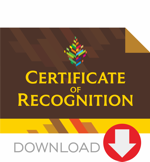Extracting Genomic DNA of Fossilised Pollens from Volcanic Soil Sediment of Liyangan Site Central Java
Building: Java Heritage Convention
Room: Room II
Date: 2018-11-06 14:45 – 15:00
Last modified: 2019-05-07
Abstract
Liyangan, Central Java, buries some artifacts in volcanic sediment including pollens. Reconstructing ancient plant diversity requires good quality in an adequate amount of genomic DNA from fossilized pollens obtained from extraction. The current study was aimed to separate the fossilized pollens from volcanic sediment and gasses then extracted. Separation was done according to the BALAR’s and Geology’s protocols while DNA extract was obtained by applying the modified CTAB and mini Genomic DNA Mini Kit. Current data were obtained from two methods, separations of the predicted pollens from volcanic sediment according to the BALAR and Geology protocols, and extraction of genomic DNA according to a modified CTAB method, and application of Genomic DNA mini kits. The BALAR method followed by CTAB resulted in 314 to 887 µg/ml genomic DNA, but the Genomic DNA Mini Kit protocol resulted in 382 to 852 µg/ml. Whereas, the Geology protocol followed by CTAB resulted in a lower concentration of genomic DNA (43 to 230 µg/ml) and 22 to 216 µg/ml by Genomic DNA Mini Kit. It can be concluded if the fossilized pollens from their volcanic soil sediment by the BALAR’s protocol would perform a better result in splitting fossilized pollens from other material. Both extraction methods resulted in an adequate amount of genomic DNA though in quite low quality.
Nurtjahjo Dwi Sasongko
Windriyani
Siswanto
Saefuddin Aziz
